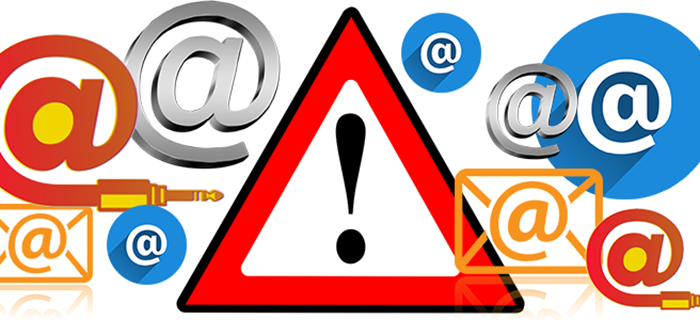Email Addresses are NOT Created Equal

Let’s get really, really, REALLY honest here. You have more than one email address, right? Me too. In fact, I have many email addresses for different purposes, but only one email address gets the “inbox zero” treatment, and that is my work email. I have two personal email inboxes, as well. I do NOT have the inbox zero mentality with my personal email inboxes, because if I did, I would go cuckoo for cocoa puffs trying to keep up. It’s not worth my sanity to look at the 12,982 emails all trying to influence me to part with my money, regardless of the fact that the OCD in me loves inbox zero.
My work email is my primary account. One of my personal Inboxes is my secondary account, and the other personal Inbox is my junk account.
My kids’ school notices, dance school emails, jokes forwarded from my dad emails all are routed accordingly in my secondary account Gmail inbox. If I buy something online, I use my junk account so the twice daily emails you get automatically thereafter by buying something don’t really bother me. I check my secondary account daily and my junk account maybe once a month.
When I find content I’m interested in, that is offered for free in exchange for my information, the email address I use will vary based on the value I place on that content. And also it depends on if it’s more relevant to me for work or is personal.
- Primary Account: Used for signing up for content that directly impacts my work and only used for work-related information, period.
- Secondary Account: Used for signing up for content that impacts me personally and I don’t mind receiving emails I indirectly opted into.
- Junk Account: Signing up for everything else. Research for work, but don’t want any sales emails or calls. Buying from online retailers when I do mind receiving emails I indirectly opted into.
Data Collection Forms
When you collect an email address on the forms you have in front of a whitepaper, landing page, coupons, offers or other digital assets, the quality of the email address you collect will depend on the perceived importance of your content and if that information will be useful to the reader in the future. Only the most engaged will hand over their primary email.
When adding the email addresses you’ve collected into your marketing communication stream, after the first month you can query the email behavioral data to see who is engaging (opening/clicking) and who isn’t. This will allow you to separate your collected email addresses into one of two buckets:
- Keep-on-Keeping-on Bucket: Contains engaged contacts who likely supplied their primary email. Recommended action is to keep on sending to them.
- Chuck ’Em Bucket: Contains invalid email addresses supplied on the form that have resolved to being invalid in your system after one hard bounce or a number of soft bounces. These are garbage and can be purged, but likely your system would suppress them anyway. Valid email addresses in this bucket are likely secondary or junk emails given in exchange for content. Recommended action is to suppress them from future campaigns. A little cleansing of the dead weight, if you will.
Why is this important?
Your ability to reach an inbox in the future depends on you following email best practices. That means a lot of things, but specifically solid list hygiene, quality email addresses and suppressing emails that don’t open or click on your emails. When collecting email addresses on a form in exchange for content, most or all of these people aren’t customers yet; you hope they become one, but they aren’t yet. Therefore, this audience needs to be handled differently if you merge them into your marketing communications lists. If you take action or automate the suppression based on engagement, happy sending!
